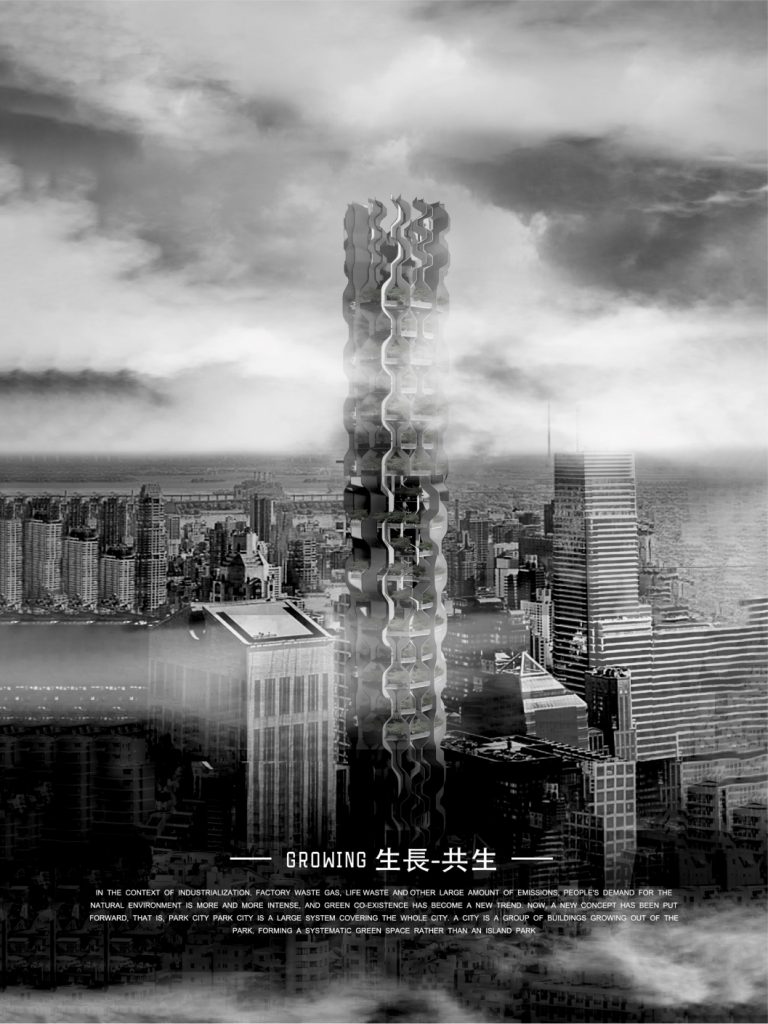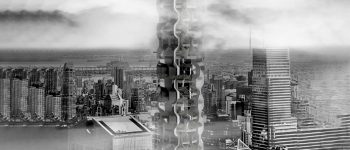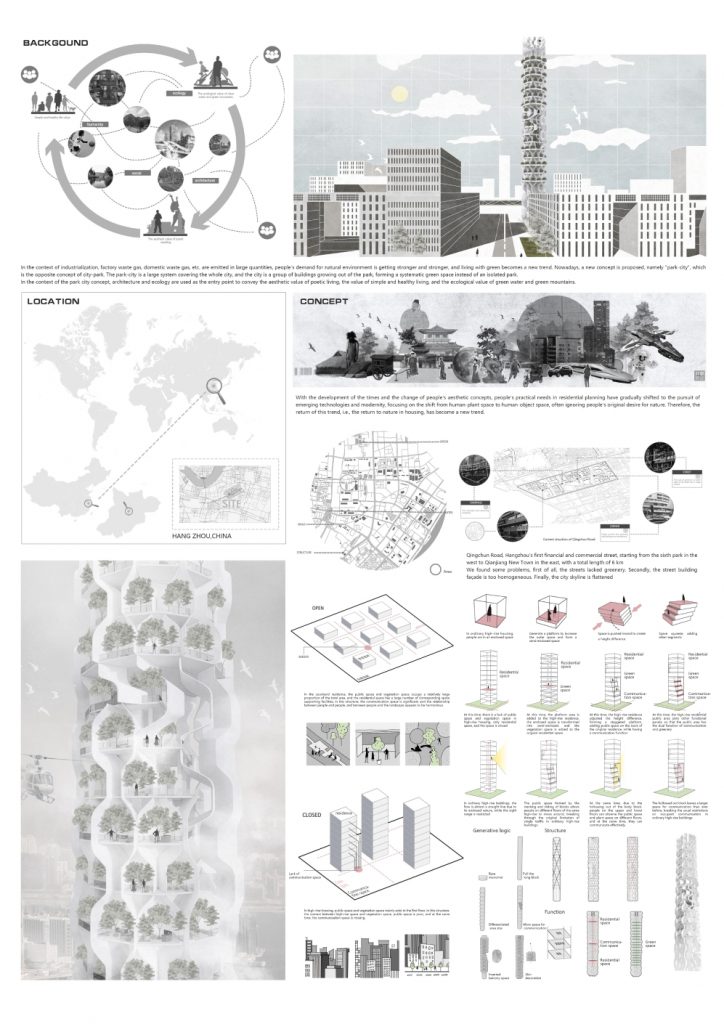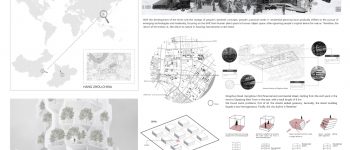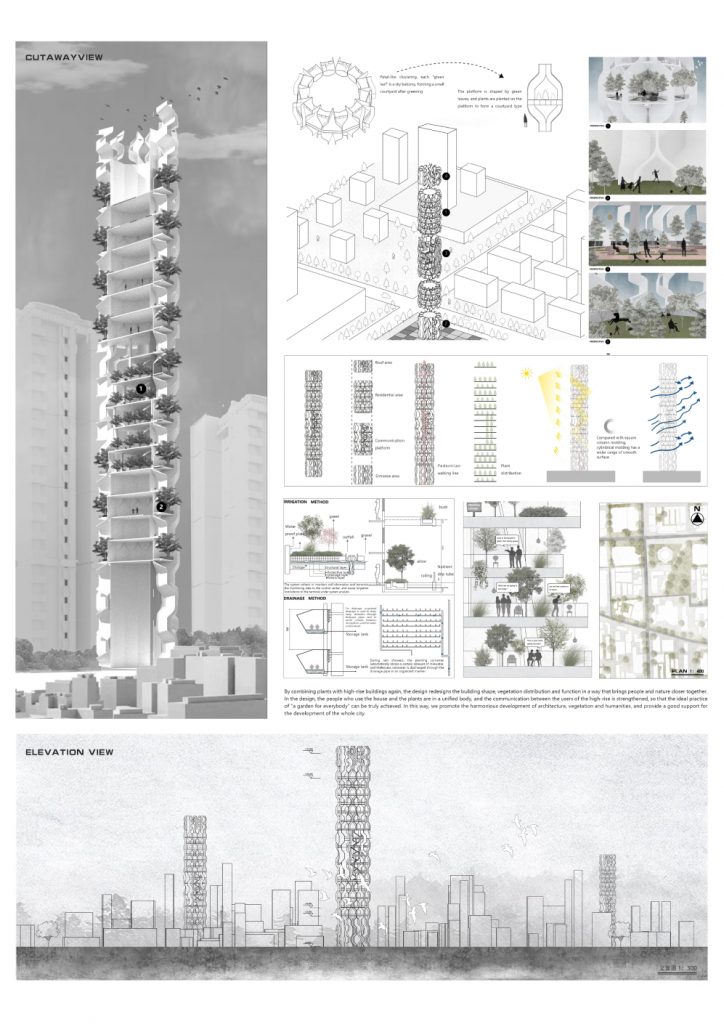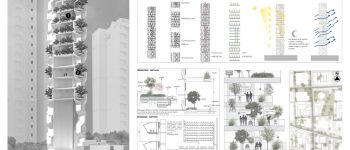In today’s industrialized world, industrial waste gas and domestic waste gas are seriously harming the natural environment and people’s living environment, and the relationship between people living in high-rise buildings and nature is seriously imbalanced. It is an important trend to bring gardens into high-rise buildings to enhance the relationship between people and nature in residential.
By combining plants with high-rise buildings again, the design redesigns the building shape, vegetation distribution, and function in a way that makes the relationship between people and nature closer, puts the residential users and plants in a unified body, and strengthens the communication between high-rise users, thus truly achieving the ideal practice of “gardening at home”. In this way, we can promote the harmonious development of architecture, vegetation and humanities, and provide a good support for the development of the whole city.
Qingchun Road, Hangzhou's first financial and commercial street, starting from the sixth park in the west to Qianjiang New Town in the east, with a total length of 6 km.We found some problems.First of all,In high-rise housing, public space and vegetation space mainly exist in the first floor.Secondly,the contact between high-rise space and vegetation space, public space is poor, and at the same time, the communication space is missing.Finally,In ordinary high-rise buildings, the flow is almost a straight line due to its enclosed nature, while the sight range is restricted.
In response to the above problems, we have developed the following methods.Firstly,The public space formed by the stacking and sliding of blocks allows people on different floors of the same high-rise to move around, breaking through the original limitation of single traffic in ordinary high-rise buildings.At the same time, due to the hollowing out of the body block, people on the upper and lower floors can observe the public space and plant space on different floors, and also communicate effectively, breaking through the limitation of a single line of sight in the original high-rise building.

